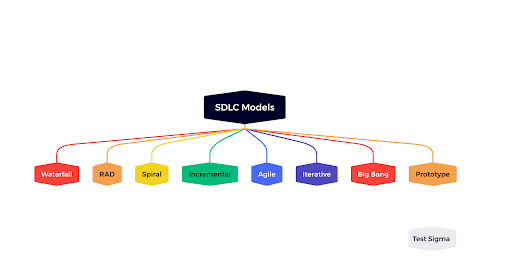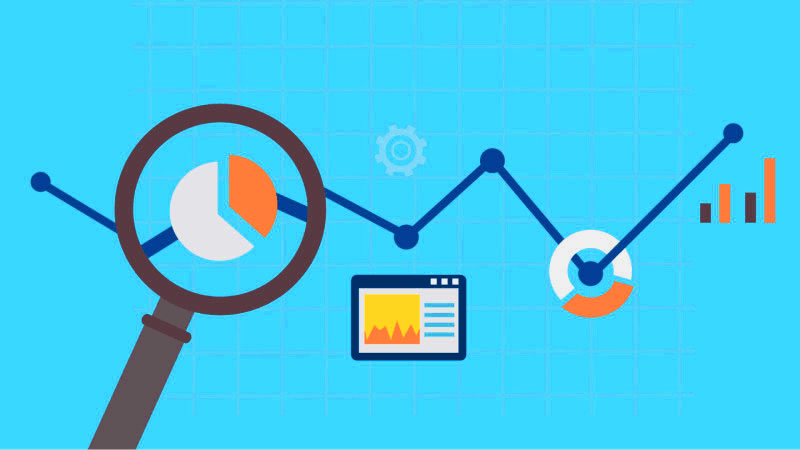
All marketing campaigns should meet certain goals, whether they’re related to obtaining new customers, increasing customer satisfaction, or selling more to existing customers. That holds for content marketing initiatives – everything from social media posts to eBooks, and everything in-between. In this article, we’ll help you determine how to choose the correct KPIs to meet your business goals.
Tracking content performance is the key to a successful campaign, but you can’t do that unless you know which metrics to track.
How do you measure whether a content piece (blog post, ebook, social media post, etc.) is meeting the goals it needs to? To meet these goals, you’ll need measurable indicators that can help you gauge the progress and make any required changes. These measurable indicators are known as Key Performance Indicators (KPIs).
“A KPI is a…metric that helps you measure performance”
A KPI is a measurement or metric that helps you measure performance (for example, of a blog post) relative to the goals you want to accomplish. When setting up KPIs, it’s important to be focused and set up KPIs that directly lead to your goal.
Focusing on the wrong set of KPIs can give you an incorrect view of how your campaigns are delivering. Far too many marketers have encountered disaster because they were tracking the wrong KPIs…resulting in large amounts of wasted budget and poor results.
With the correct KPIs set, you’ll be positioned to secure your campaigns are highly successful.
Choosing the Correct KPIs
There is no one-size-fits-all KPI – the right one depends on what you’re doing and how you’re doing it. Keep the following portions and tips in mind when you’re setting up KPIs for your content marketing campaigns:
Business Goals Setting
The primary function of KPIs is to help your content reach your business goals by measuring their progress and contribution. As such, your KPIs can only work if you have clear and specific business goals that you want your content piece or campaign to complete, such as:
- Acquire new customers;
- Increase eCommerce revenue;
- Generate more marketing qualified leads (MQLs);
- Generate more sales qualified leads (SQLs);
- Generate more leads that convert into a purchase.
Understanding Revenue Model & Sales Process
Websites typically fall into one of three broad business types: ad-driven, eCommerce, and leads-driven. This article will focus primarily on businesses that need to generate leads or drive eCommerce revenue.
If your company concentrates on driving eCommerce revenue, this is usually pretty easy to track. Google Analytics and other solutions have built-in features for directly tracking eCommerce revenue.
If your company concentrates on generating leads that are contacted and closed by a sales team, the picture is a little more complicated. It’s easy to track leads, but savvy marketers do much more than that – you’ll need to have a full understanding of the sales process, and how leads are tracked through each step.
For example, a professional consulting firm might have a sales cycle that looks something like this:
- User reads a blog post;
- User downloads an ebook or other resources;
- User receives a series of emails;
- User communicates with salesperson;
- User gets a proposal;
- User decides to purchase the consulting package offered.
Setting Different KPIs for Different Campaigns
Most likely, your company will have multiple sales processes, with each one being a little different depending on the type of view, which campaign they responded to, what you’re trying to sell to them, and so forth. You’ll likely need a slightly different set of KPIs for each sales process and/or marketing campaign you launch.
Goal of KPI
Here’s a good rule of thumb when choosing KPIs for content pieces: the purpose of each piece of content is to move the user to the next step in the sales process.
Set a KPI for each piece of content that measures its ability to get a user to the next step.
- User reads a blog post; KPI is conversions to download an ebook or other resources.
- User downloads an ebook or other resources; KPI is % of users who click on the CTA and contact a sales representative.
- User receives a series of emails; KPI is % of users who contact a sales spokesperson.
- User communicates with salesperson; KPI is % of users who request the proposal.
- User receives a proposal; KPI is the % of users who purchase the proposed solution.
- User decides to purchase the consulting package offered; it’s a win!
Before you can set KPIs for a given piece of content, you need to know where in the buying process the content will interact with users, and what the next step is!
Ultimate Conversions & Micro-Conversions
For most websites, the ultimate goal is revenue, whether it’s gained via eCommerce or via generating leads that close into sales. That’s your ultimate goal, and revenue should be the ultimate KPI you use to track the success of marketing campaigns.
But it doesn’t necessarily make sense to track each content piece’s performance based on the ultimate KPI (revenue). As mentioned above, you’ll likely have different KPIs for each step of the sales process – these are often called micro-conversions or KPIs.
But always keep an eye on how your micro-conversions relate to your ultimate goal. If you’re seeing good results performing your micro-conversions but you’re not achieving your ultimate goal (i.e. revenue) that’s a red flag that there’s a problem with your campaign targeting or strategy.
Run Away From Vanity Metrics
Far too many marketers love to report on good metrics but don’t necessarily help you make a profit. These are ultimately vanity metrics – and you want to avoid paying too much attention to them. Here are a few popular metrics that you should usually avoid using as KPIs:
- Pageviews
- Site visits
- Bounce rate
- Time on site
- Social media likes
- Social media shares
Managing KPIs
All of your Key Performance Indicators should be objectively identified, measured, and tracked. To help with that, you can create a spreadsheet or worksheet to keep track of your KPIs for each campaign, which usually works well to track KPIs at multiple levels: overall, campaign-level, and content-level.
Don’t Forget Attribution
Because many analytics solutions are set to use a specific type of attribution (such as last-click), it’s easy to get inaccurate metrics for some points in your sales cycle.
Take this example sales cycle:
- Prospect clicks on a PPC ad
- Prospect downloads a free ebook
- The prospect clicks a link in the ebook to purchase the full training package
In a case like this, if your analytics program uses last-click attribution, it would show 1 sale attributed to the ebook campaign link, and 0 sales attributed to the PPC ad campaign.
That’s why it’s important to understand and use different attribution models. If you’re using Google Analytics, you can view a variety of attribution models, as well as create custom attribution models to accurately track each step in your sales process.



